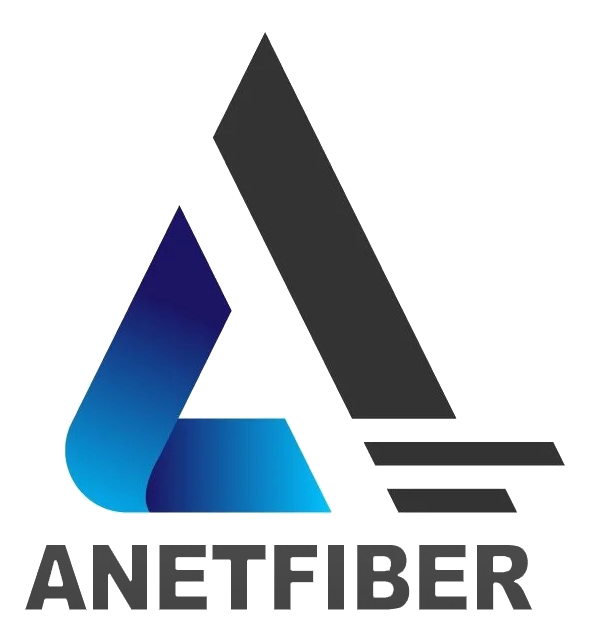4 Essential Considerations for Selecting Fiber Optic Patch Cable Lengths

Introduction
In the realm of modern networks, Fiber Optic Patch Cables play a pivotal role in ensuring seamless and efficient data transmission. These specialized cables are the lifeline of fiber optic networks, facilitating the high-speed transfer of data across various network components. The reliability and performance of these networks heavily rely on the proper selection and utilization of Patch Cable Lengths.
The length of Fiber Optic Patch Cables holds significant sway over the overall performance and stability of a network. It directly impacts signal integrity, data transmission speed, and network latency. As such, understanding the implications of cable length on network performance is crucial for network administrators and IT professionals tasked with optimizing network infrastructure.
Understanding Fiber Optic Patch Cable Lengths and Their Importance
Fiber Optic Technology Basics
Fiber optics, a revolutionary technology in data transmission, utilize glass or plastic fibers to transmit data in the form of light pulses. These fibers are designed to carry large amounts of data over long distances with minimal signal loss. The use of Fiber Optic Cables enables high-speed and high-capacity data transfer, making them indispensable in modern networking infrastructure.
The Role of Patch Cables in Fiber Networks
Patch Cables, also known as patch cords or fiber jumper cables, serve as the essential links that connect different network components such as switches, routers, and servers. They provide the necessary connectivity for seamless data transmission within a network. These cables come in various types and configurations to accommodate different network setups and requirements.
The Significance of Choosing the Correct Cable Length
Selecting the appropriate cable length for fiber optic patch cables is crucial for maintaining optimal network performance. Incorrect cable lengths can lead to signal attenuation, which refers to the loss of signal strength as it travels through the cable. This can result in degraded data transmission quality and increased error rates.
Cable Length vs. Signal Attenuation
The relationship between cable length and signal attenuation is a critical factor in fiber optic networks. Longer cables can experience higher levels of signal attenuation, especially if they exceed recommended length limits. This underscores the importance of carefully considering cable lengths to minimize signal loss and maintain reliable data transmission.
Cable Length Standards
In order to ensure consistent performance across fiber optic networks, industry standards dictate specific cable length guidelines for different types of installations. Adhering to these standards helps mitigate potential issues related to signal attenuation and ensures that networks operate within optimal parameters.
Key Considerations for Selecting the Right Cable Length
When it comes to selecting the right Fiber Optic Patch Cable lengths, several key considerations come into play. From finding the optimal cable length for data transmission to implementing effective patch cable length selection strategies, network administrators and IT professionals must navigate through various factors to ensure the seamless operation of fiber optic networks.
Optimal Cable Length for Data Transmission
Balancing Length and Performance
Finding the optimal cable length for data transmission is a critical aspect of maintaining network efficiency. It involves striking a delicate balance between the distance data needs to travel and the preservation of signal integrity. The goal is to minimize signal attenuation while ensuring that the cable length meets the practical requirements of the network layout.
Cable Length Limitations
Understanding cable length limitations is essential in preventing performance issues within fiber optic networks. Exceeding recommended cable lengths can lead to increased signal loss and potential disruptions in data transmission. By adhering to established standards and guidelines, network administrators can mitigate these limitations and optimize network performance.
Patch Cable Length Selection Strategies
Cable Length Measurement Methods
Implementing accurate cable length measurement methods is crucial for determining the precise requirements of a fiber optic network. Various techniques, such as time domain reflectometry (TDR) or optical time domain reflectometer (OTDR), enable precise measurements, allowing for the selection of appropriate patch cable lengths based on specific network configurations.
Effective patch cable slack management is an often overlooked yet vital aspect of ensuring optimal network performance. Managing excess cable slack not only enhances aesthetic organization but also minimizes signal interference and potential damage to cables. Proper slack management contributes to maintaining signal integrity and reducing the risk of performance degradation.
Best Practices for Fiber Optic Patch Cable Length Selection
When it comes to ensuring optimal performance and reliability in fiber optic networks, adhering to cable length standards and guidelines is paramount. Following best practices in cable length selection not only enhances network efficiency but also minimizes the risk of signal attenuation and data transmission disruptions.
Following Cable Length Standards and Guidelines
Cable Length Testing and Validation
One of the fundamental best practices in fiber optic patch cable length selection is conducting thorough cable length testing and validation. This process involves using specialized equipment to measure the exact length of patch cables, ensuring that they align with industry standards and specific network requirements. By verifying the accuracy of cable lengths, network administrators can mitigate potential issues related to signal attenuation and data integrity.
Patch Cable Routing Guidelines
Implementing effective patch cable routing guidelines is essential for maintaining organized and efficient fiber optic networks. Proper routing ensures that cables are laid out in a manner that minimizes interference and reduces the risk of damage. Adhering to established routing guidelines also facilitates easier maintenance and troubleshooting, contributing to overall network reliability.
Avoiding Common Mistakes in Cable Length Selection
Understanding the Impact of Excess Cable
A common pitfall in cable length selection is overlooking the impact of excess cable within a network infrastructure. Excessive slack or unnecessarily long patch cables can lead to signal interference, increased susceptibility to environmental factors, and challenges in cable management. Network administrators must carefully assess the actual requirements of their network layouts to avoid unnecessary excess cable.
Planning for Future Network Expansions
Anticipating future network expansions is a critical aspect of effective cable length selection. As networks evolve and grow, additional components may be introduced, requiring adjustments in cable lengths. By considering potential expansion scenarios during the initial cable length selection process, organizations can minimize future disruptions and ensure scalability without compromising network performance.
Conclusion
In conclusion, the selection of Fiber Optic Patch Cable Lengths is a critical consideration for ensuring optimal performance and reliability in modern networks. By understanding the impact of cable lengths on network performance and implementing best practices in cable length selection, organizations can mitigate potential issues related to signal attenuation and data transmission disruptions.
Recap of Key Points
Throughout this blog, several key points have been highlighted to underscore the importance of considering cable lengths in fiber optic networks. Firstly, the role of Fiber Optic Patch Cables as essential components in network infrastructure has been emphasized. These cables serve as vital links that facilitate high-speed data transmission within networks.
The significance of choosing the correct cable length has also been addressed, emphasizing its direct influence on signal integrity and data transmission quality. Understanding the relationship between cable length and signal attenuation is crucial for maintaining reliable network performance.
Key considerations for selecting the right cable length, including finding the optimal length for data transmission and implementing effective patch cable length selection strategies, have been discussed. Balancing length and performance while adhering to established standards is essential for optimizing network efficiency.
Best practices for Fiber Optic Patch Cable Length Selection, such as following cable length standards and guidelines, conducting thorough testing and validation, and avoiding common mistakes in cable length selection, have been outlined to guide network administrators in making informed decisions.
Call to Action: Implementing Best Practices in Cable Length Selection
As organizations strive to enhance their network infrastructure, it is imperative to prioritize best practices in Fiber Optic Patch Cable Length Selection. By integrating these considerations into network planning and maintenance processes, businesses can ensure seamless data transmission, minimize signal attenuation, and lay a strong foundation for future scalability.
See Also
Explaining the Construction of Fiber Optic Cable Components
The Crucial Role of Fiber Optic Connectors in Network Performance
Understanding the Different Types of Optical Fiber Cables


